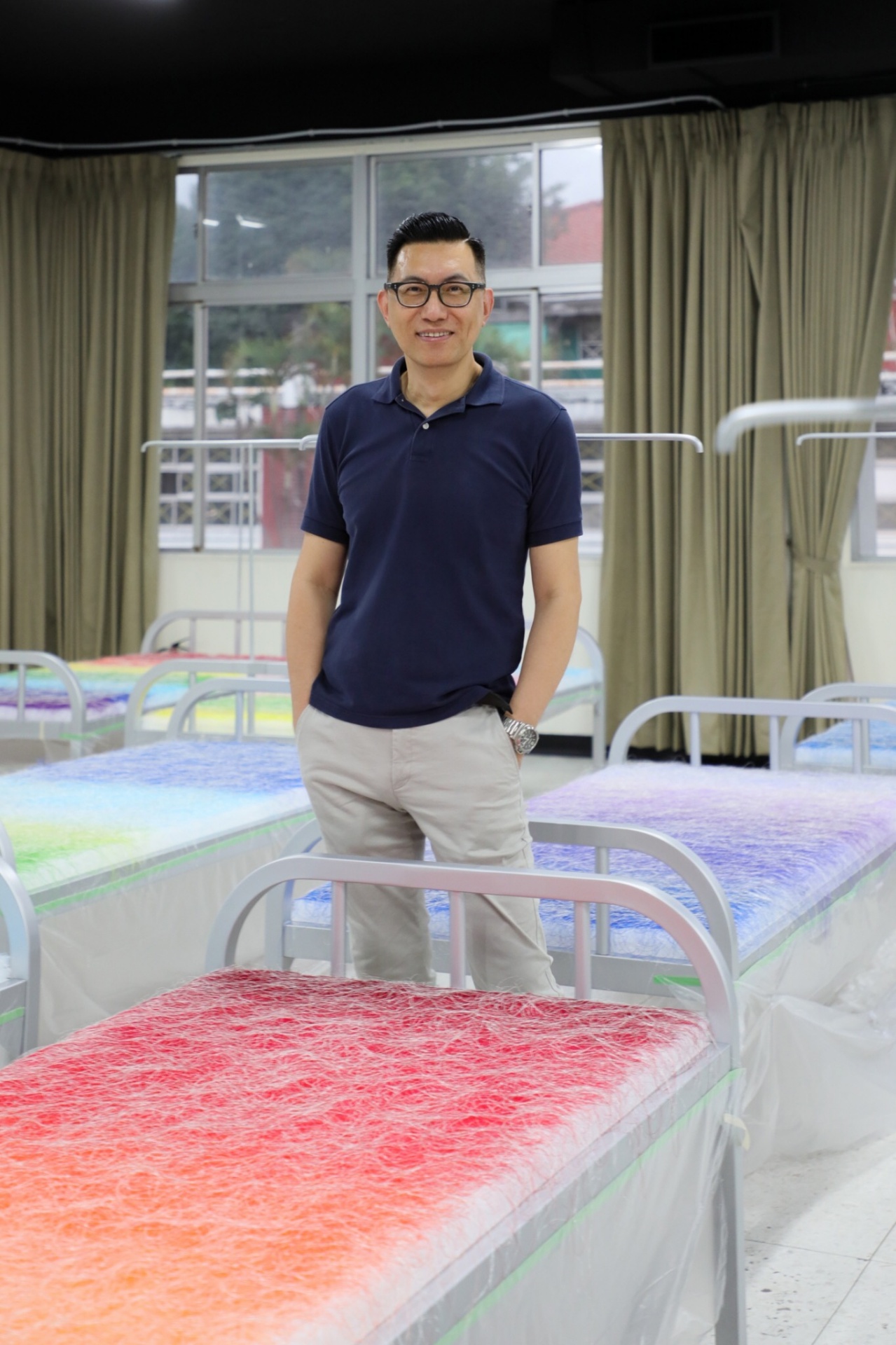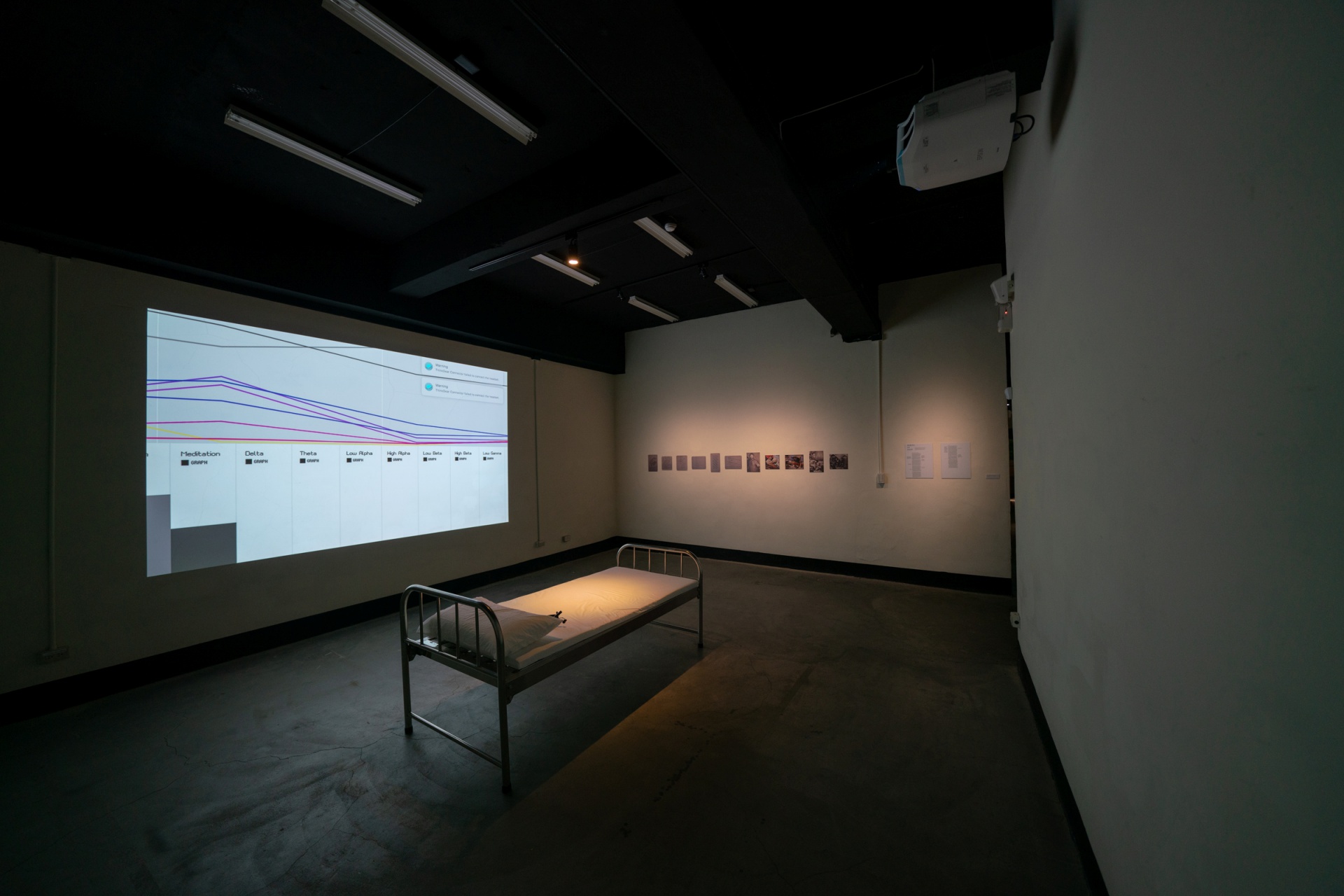2018年11月中,展覽範圍涵蓋臺灣當代文化實驗場多處建築空間、由策展人王俊傑規劃,邀集11組藝術家參與的「再基地:當實驗成為態度」展正式開幕。此次展覽以「實驗」為核心概念,一方面回應展覽基地本身的歷史與文化意義,另一方面則希望藉此提問藝術及思想作為建構當代文明與身分本質時,一種關於對未來不確定卻不斷持續的創作精神。而在與策展人王俊傑的專訪對話中,我們也重整了策展人在本次展覽中對於「實驗」概念的積極想像。
Q:請談談為什麼將展覽命題訂為「實驗」?
 策展人王俊傑。圖/陳慧嶠攝影
策展人王俊傑。圖/陳慧嶠攝影
王俊傑(簡稱「王」) :「臺灣當代文化實驗場」最初的名稱是「空總文化實驗室」,「實驗」這個概念本來就是要發展的重點,所以我從這個角度去想:「如果要詮釋這個空間、找藝術家,那我的著力點到底是什麼?」現在談「實驗」好像是個很老的字眼,但我們卻從來沒有真正去討論過,再加上我本來對藝術史就相當有興趣,所以會從所謂西方的史觀去看,但不全然是要去詮釋西方的結構,而是因為我們從小到大都是受外來知識的訓練,但其實一直搞不清楚,對本土的知識常是誤用或是僅僅作為政治鬥爭的工具,一切概念都是非常模糊的。所以我希望至少回到那些所受訓練的知識源頭,比如為什麼西方藝術史會這樣建構?這些之於我們的環境而言又是什麼?大概是這樣的出發點。
Q:可否說明在展覽論述中引用部分史澤曼(Harald SZEEMANN)於1969年策劃的「活在你的腦子裡,當態度成為形式」(Live in Your Head: When Attitudes Become Form)展覽概念的原因?
王:乍看之下可能會覺得是受到他影響、要去呼應那個展覽,其實不是。西方本來就有很完整的文化、藝術脈絡,一路走來每個段落關係都是有連結的,也因為有那些轉折才會發展成當代藝術的一些變化。可是當我們今天來看臺灣整個文化發展的時候,會發現我們沒有這樣脈絡的轉折,雖然十年、二十年是一個時間軸,但事實上並沒有辦法有效地被串聯出一種步驟。
回頭來看臺灣當代文化實驗場這個空間,它為什麼現在會變成文化基地?而且強調實驗?在臺灣,文化可能有多元面向,但實驗其實從來都不是一個有脈絡的東西,它好像都只是一種名詞、口號。但是對西方來說,實驗是可以在脈絡中被建構起來的,比如1940、50年代到1960年代,那些藝術家無論團體、流派、個人,他們都在打破舊有的藝術規範、轉折到新的可能,其實都是一個脈絡性的進程。史澤曼的展覽其實只是一個點,但它可以被當成是某種小的縮影,而史澤曼原本是官方美術館的策展人,但他提出一個新的展示和詮釋方法,並且扣合西方藝術發展的脈絡。但今天我們選擇空總作為文化基地,賦予它很多想像的時候,「實驗」這件事的意義到底是什麼?所以對我來說,舉史澤曼的展覽比較像是去反問而非呼應。因為這樣的脈絡離我們太遠、也無法類比。
西方歷史的脈絡,現在回頭看好像一切都順理成章,但臺灣在看自己的進程時有一個複雜的脈絡,無可避免地要把西方的東西放進來,今天談當代藝術的概念基本上都是西方的,因而當我們要講實驗的可能時,如果不去理解西方,我們要如何看待自己對文化的演變歷史?我們一方面要去理解別人,一方面要看自己,最後要回到比較高的位置去看在全球化底下,我們的角色是什麼。
Q:在規劃展覽時,你怎麼思考邀請藝術家跟空間的關係?
王:原本的設定就是委託製作,希望他們提出新的作品,所以一開始和藝術家聯絡時我們就已經整理了一份關於這個空間的歷史沿革、可用空間和策展概念的文件。藝術家是否要參加展覽都是從這份文件開始理解,所以不會提出和空間完全不相干的作品來。只是有些作品很明顯可以看出跟空間的關係,但有些作品需要層層地去探討。
一開始我先從幾位藝術家(鄭淑麗、高重黎、陳慧嶠、夏宇)開始發展、想像藝術家構成的網絡,他們的創作都有某種不斷嘗試但又不合時宜、叛逆的味道在裡面(都是看起來很完整但又很難跟市場對話、不知如何定義的作品),我想透過這樣的關係重新去看我們到底應該何去何從。這裡面既有對原本史觀的不確定性,也有對未來的不確定性。我們如果不了解西方,就無法知道為什麼我們現在發展成這樣,而對於未來,作品被提出的想像又是什麼?所以展覽裡面很重要的是某種開放性,這樣的開放性對比於現在某些體制比如藝術市場、教育、分類學等等好像是對立的,但我們似乎從未好好思考這件事。
 鄭淑麗與馬修.富勒(Matthew FULLER)《Sleep 79》。圖/臺灣當代文化實驗場提供
鄭淑麗與馬修.富勒(Matthew FULLER)《Sleep 79》。圖/臺灣當代文化實驗場提供
縱使今天在談跨領域,也是很模糊的、約略的概念。歐洲現在的趨勢,很少會大張旗鼓去強調跨域,包括美術館、藝術家、策展人也都在重新詮釋藝術史。這是因為他們的藝術史發展已經非常成熟,所以在找一種新的詮釋方法。我們是否應該有一個交錯式的、不同角度去看整個環境和事件,而不是單獨從一個角度去看,所以我認為還是要回到基地本身去探討:為什麼要做這件事?這絕對是主觀或不全面的,但我們是否應該從這樣的角度入手。所謂主流、非主流、核心、非核心之間的關聯性到底可否再思考?而這裡既然已經提出了「實驗」,但如果沒有透過實驗去思考文化的未來發展,這是很可惜的,所以對作品的考量也會希望能更多元,所以會有不同類型的創作進來。
Q:剛剛講到不合時宜跟叛逆的性格,你本身也是藝術家,這樣的性格在你的創作中其實也可以看到,例如許多帶有不確定性的作品(如《無人劇場》),這兩點在你的策展中是否有什麼影響?
王:這是蠻好的問題,但這裡會談到比較個人的東西,我算出道算早,一直以來我的創作觀跟狀態都蠻一致,就是觀念性、大型複媒裝置作品,這樣的創作其實不是主流,我後期作品也轉向更個人化或是偏討論藝術史、討論影像,也不在主流討論的議題裡(政治性、社會介入),但我不是不重視這些,而是不同時期每個人會有不同的關注面向,這是藝術家對自己提問的方式,以及身為藝術家為什麼要創作的態度問題。
另一方面,這也是我面對藝術生態時的質疑,所以在展覽裡,我從這樣的角度延伸,這些藝術家的創作對我來說都有這樣的方向。我想透過談「實驗」這個東西去談藝術的本質,藝術再往下開展、影響到文明或文化的基礎應該是什麼?理論上它應該是一個很純粹的,具有某種態度的建構。當然有些人會覺得這種談法很老套,可是我要強調的是,臺灣不等於世界,你不能從臺灣看世界也不能直接從世界看臺灣,必須跳開去看臺灣歷史跟國際的關係。在擁抱全球化的同時,到底我們自己有沒有建構過那個很核心、很扎實的美學基礎?如果都沒有的話,那麼如何談全球化對我們的影響?或是今天當我們去擁抱世界的時候是用什麼角度在看藝術、看文化、看世界?
 鄧堯鴻《繭影》。圖/臺灣當代文化實驗場提供
鄧堯鴻《繭影》。圖/臺灣當代文化實驗場提供
不合時宜、叛逆、非主流的問題在臺灣很容易被模糊或自由詮釋,但是很少從美學或創作本質上去討論,我們大多都在處理非常表面的問題。所以我一直在說「in-between」,在2006年「限制級瑜伽」時,我其實也在談這樣的概念:「有沒有一種中介的東西?」就像是這次鄧堯鴻作品所談的,某種存在於夾縫裡、即便人們不去注視,但卻是我們日常中無法逃離的、那些尚未被我們好好討論的東西。我們從西方當代藝術的角度可以看到對實驗藝術的脈絡,但從臺灣的角度,我們應該要建構一個新的討論機制來談所謂的「實驗」之於我們的意義。